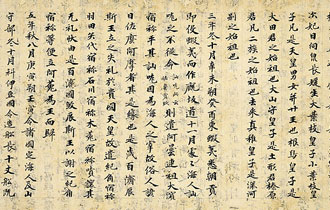Pages
|
The Allied Occupation of Japan ended on April 28, 1952, when the San Francisco Peace Treaty was enforced. A year earlier, in May 1951, President Harry Truman's Secretary of State, Dean Acheson, had appointed the Republican John Foster Dulles as special ambassador to negotiate a treaty to end World War II and thus the occupation. Having worked out arrangements to guarantee American protection in the case of a resurgence of Japanese militarism, Dulles persuaded Japan's Asian neighbors, excluding China and the Soviet Union, to agree to a peace treaty with Japan.
Representatives of forty-eight Allied nations and Japan met in San Francisco in September 1951 to sign a treaty that ended the Allied Occupation and returned sovereignty to Japan and its people. Crucial to the agreement was Yoshida's signing the United States-Japan Mutual Security Agreement, a pact which allowed the United States to station troops in Japan and use them both to pursue American and Japanese security needs in Asia and to intervene in unrest within Japan that the American and Japanese governments believed was incited by other outside nations. From 1952 until the revision of the Security Treaty in 1959-60, American military personnel in Japan lived and worked much as foreigners had in the treaty ports of the late nineteenth century; a soldier did not even have to carry a passport-his American military identification card was all he needed to travel freely within the newly "independent" Japan. By enlisting in the American Cold War order, Japan regained its sovereignty and undertook its dramatic economic recovery and expansion.
Conclusion
The question of the success or failure of the occupation of Japan is a controversial one. While most writers on the subject (and Japanese on the street) agree that the first two years of the occupation, in which SCAP, albeit sometimes in an obtuse and top-down, undemocratic way, dismantled Japan's wartime military order and set the foundations for a democratic polity, was on the whole beneficial to Japan, many think that the policies of the reverse course period obstructed the development of real democracy in Japan. By throwing its weight behind leaders who had cooperated in Japan's wartime aggression and by using force to suppress opposition activists who disagreed with its policies, SCAP showed it did not have a real commitment to democracy. Others criticize Yoshida Shigeru and his successors in running the Liberal-Democratic Party for their cooperation with the United States in the cold war. These critics fall into two groups: those on the left, who think Japan's natural allies were China and the Soviet Union, and those on the right, who decry Yoshida's surrender of Japan's foreign policy-making independence to the United States. Yoshida's supporters counter by arguing that he kept Japan from falling under the communist yoke and that he built the foundations for Japan's development into the world's second richest nation-and for the dramatic growth of Japanese standards of living. It seems in conclusion that one can give "two cheers" for the Allied Occupation. There is no doubt that the average Japanese is freer and richer in the early twenty-first century than his grandparents were before World War II; and that Japan today is far more egalitarian than it was in the 1930s. On the other hand, the Japanese government, in spite of a highly developed "peace culture" in Japan, that is, a citizenry who are overwhelmingly opposed to war of any kind, still thinks it necessary to follow Washington's lead in pursuing its foreign policy. Up until now, Japan has found that, for better or worse, "going along" is more profitable than "going alone."
Richard J. Smethurst
Pages
|











